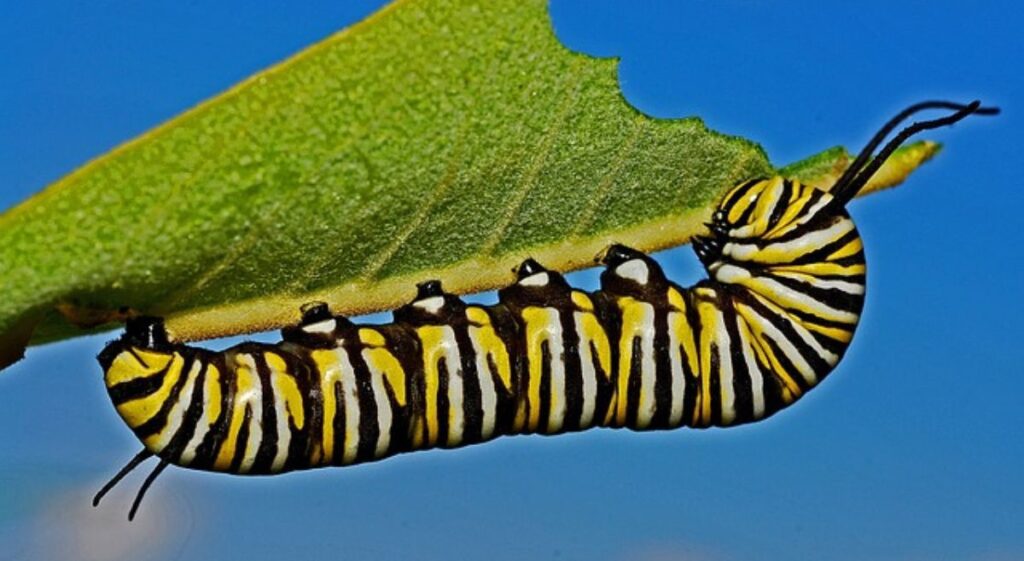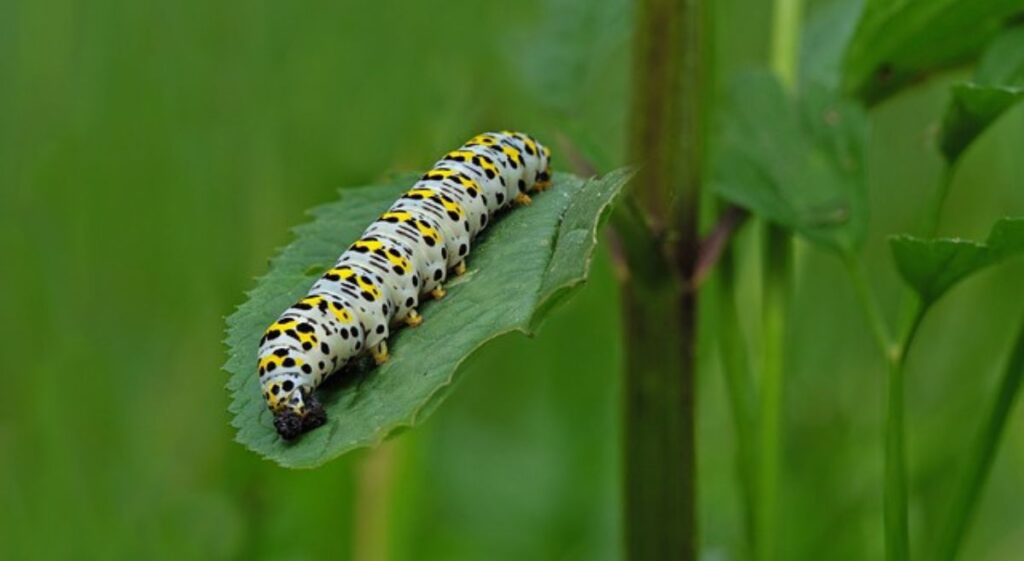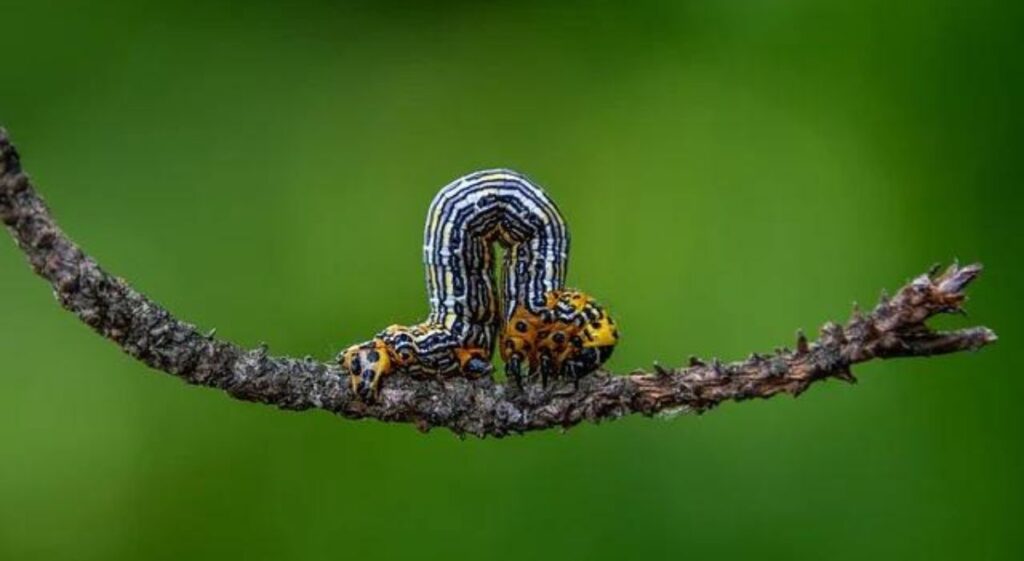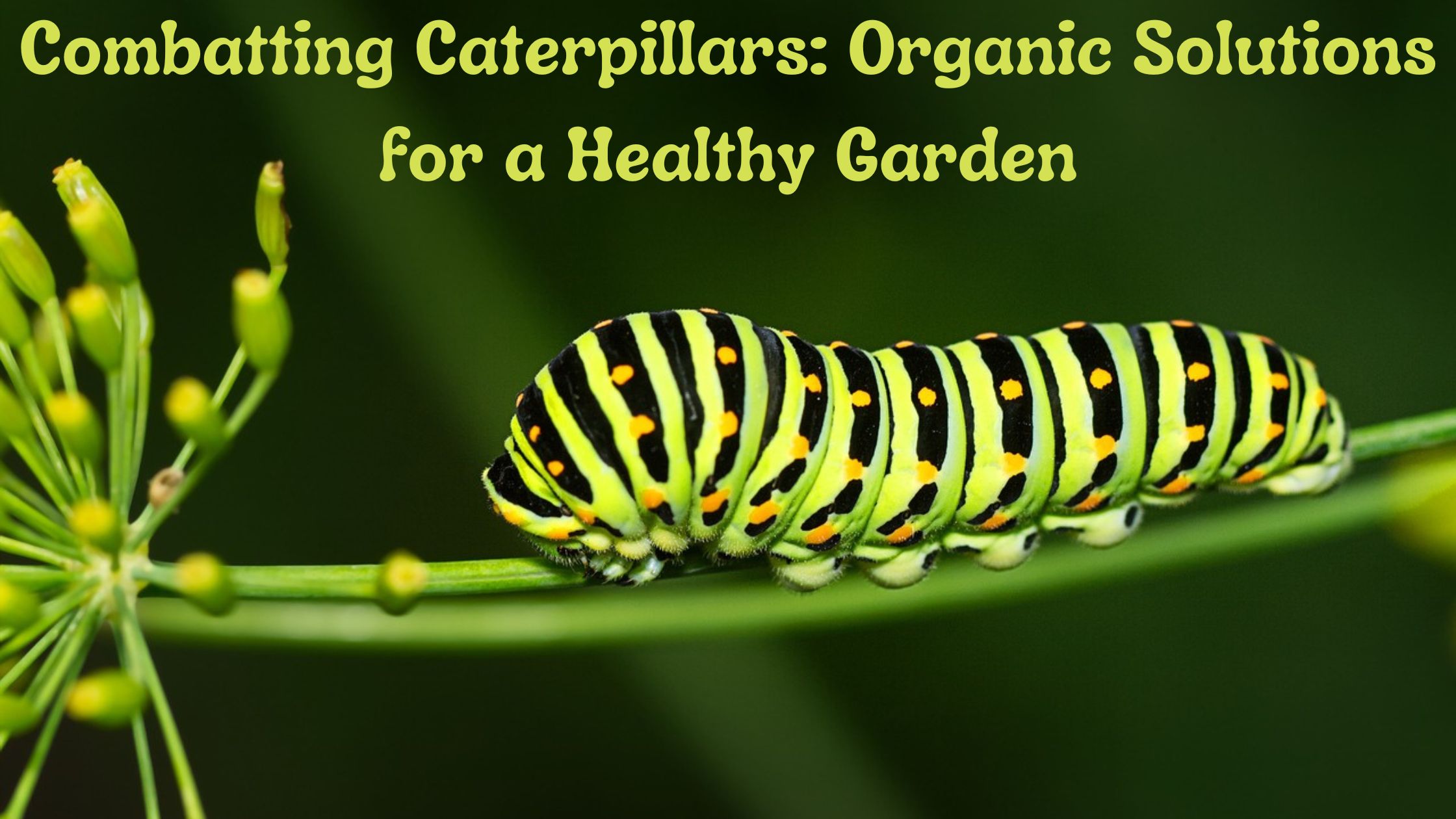Introduction
Combatting Caterpillars: Organic Solutions for a Healthy Garden

Caterpillars, while essential in the ecosystem as future butterflies and moths, can wreak havoc on your garden. If you’re a gardener who wants to protect your plants without resorting to harsh chemicals, there are several organic methods to keep these hungry pests in check. In this article, we’ll explore effective, eco-friendly ways to combat caterpillars and maintain a healthy, thriving garden..
Combatting Caterpillars
1. Handpicking: A Practical and Effective Solution
Handpicking is a simple yet highly effective method for controlling caterpillars, especially in smaller gardens. Regularly inspect your plants, particularly the undersides of leaves, and remove any caterpillars you find. Drop them into a bucket of soapy water to prevent them from returning.
2. Encouraging Natural Predators: A Balanced Approach
Introducing natural predators such as birds, wasps, and ladybugs is an eco-friendly way to keep caterpillar populations in check. To attract these beneficial creatures to your garden:
- Plant nectar-rich flowers like marigolds, daisies, and sunflowers, which are attractive to predators.
- Install bird feeders and baths to encourage birds to visit your garden and prey on caterpillars.
- Avoid chemical pesticides, as they can harm beneficial insects that naturally control caterpillars.
3. Neem Oil: A Potent Organic Pesticide
Neem oil, derived from the neem tree, is a powerful organic insecticide effective against caterpillars. When applied to plants, neem oil disrupts their feeding and growth, making leaves unpalatable. To use neem oil:
- Mix 2 tablespoons of neem oil with a gallon of water.
- Add a few drops of dish soap to enhance the solution’s adherence to leaves.
- Spray the mixture on affected plants every 7-10 days.
By implementing these organic methods, you can effectively control caterpillars in your garden while promoting a healthy ecosystem.
4. Bacillus Thuringiensis (Bt): A Targeted Biological Control
Bacillus thuringiensis (Bt) is a naturally occurring bacterium that selectively targets caterpillars without harming other insects or animals. Caterpillars ingesting Bt experience digestive system disruption, leading to reduced feeding and eventual death. Bt comes in powder or liquid spray form and should be applied to plants where caterpillars are present. For safe and effective use, follow the manufacturer’s instructions.
5. Companion Planting: An Organic Repellent for Caterpillars
Companion planting involves growing certain plants alongside vegetables and flowers to deter caterpillars. This organic pest control method utilizes the natural repellent properties of companion plants. Some effective options include:
- Basil: Repels tomato hornworms and other caterpillars.
- Lavender: Its strong scent discourages moths and caterpillars.
- Dill and Fennel: Attracts predatory insects that feed on caterpillars.
6. Maintaining Garden Hygiene for Caterpillar Prevention
Good garden hygiene is crucial for preventing caterpillar infestations. Regularly remove plant debris, fallen leaves, and weeds that provide hiding spots for caterpillars and their eggs. Pruning and thinning your plants also improve air circulation, making your garden less attractive to pests.
7. Diatomaceous Earth: A Natural Barrier Against Caterpillars
Diatomaceous earth, a powder derived from fossilized aquatic organisms, acts as a physical barrier when sprinkled on plants. Tiny cuts on caterpillars’ bodies caused by the powder lead to dehydration and eventual death. To use diatomaceous earth effectively:
- Apply the powder directly to the leaves and stems of your plants.
- Reapply after rain or heavy watering to maintain effectiveness.
Do natural predators help in controlling caterpillar populations?
Natural predators play a vital role in controlling caterpillar populations in gardens. Introducing and encouraging these predators can help reduce the number of caterpillars without the need for chemical pesticides. Here are some of the key predators and their roles:

1. Birds:
- Many bird species, such as chickadees, sparrows, and wrens, feed on caterpillars.
- Attracting these birds with bird feeders, birdbaths, and nesting boxes creates a natural defense against caterpillar infestations.
2. Parasitic Wasps:
- Parasitic wasps are highly effective natural predators of caterpillars.
- They lay their eggs inside caterpillars, and the larvae consume the caterpillar from the inside out.
- Planting nectar-rich flowers can attract these beneficial wasps to your garden.
3. Ladybugs:
- Ladybugs are known for their appetite for aphids but also consume caterpillar eggs and young larvae.
- Introducing ladybugs to your garden can help control caterpillar numbers before they become a significant problem.
4. Spiders:
- Spiders are generalist predators that eat various garden pests, including caterpillars.
- Encouraging spiders by providing undisturbed areas or planting dense foliage can reduce caterpillar populations naturally.
5. Ground Beetles:
- Ground beetles prey on caterpillars, especially soil-dwelling or pupating in the ground.
- Maintaining healthy soil and avoiding broad-spectrum pesticides that might harm them can encourage these beetles.
6. Nematodes:
- Beneficial nematodes are microscopic worms that target caterpillar larvae in the soil.
- Applying nematodes to your garden soil can reduce the number of caterpillars that emerge to feed on your plants.
7. Frogs and Toads:
- Frogs and toads are excellent at controlling caterpillar populations, particularly at night.
- Creating a pond or a damp area in your garden can attract these amphibians.
By incorporating these natural predators into your garden ecosystem, you can effectively manage caterpillar populations in an environmentally friendly and sustainable manner.
How to Attract Natural Predators
To harness the full potential of natural predators in your garden, consider the following strategies:
Plant Diversity:
- Grow a wide variety of plants to create diverse habitats and provide a consistent food source for predators.
Pesticide Avoidance:
- Opt for organic gardening practices to protect beneficial predators, as chemical pesticides can indiscriminately harm both predators and pests.
Predator Shelter:
- Provide shelter for predators, such as dense plantings, rock piles, or birdhouses, to create a welcoming environment where they can thrive.
By fostering a diverse and predator-friendly ecosystem, you can significantly reduce caterpillar populations in your garden while promoting the overall health and balance of your plants. Natural predators are a crucial part of integrated pest management, and their presence helps maintain a harmonious and sustainable garden environment.
Which plants repel caterpillars naturally?
To protect your garden from caterpillars naturally, incorporate plants with repellent properties. These plants emit strong scents or contain compounds that caterpillars find unappealing, deterring them from your crops.

1. Basil:
- Benefits: Basil’s aroma repels caterpillars, especially tomato hornworms.
- Usage: Interplant basil with vegetables or grow it in pots around your garden.
2. Mint:
- Benefits: Mint’s scent deters pests, including cabbage moths and larvae.
- Usage: Plant mint around your garden’s borders or near vulnerable plants, but be mindful of its rapid spread.
3. Lavender:
- Benefits: Lavender’s oils repel moths and caterpillars, with a pleasant fragrance for humans.
- Usage: Grow lavender near garden edges or in pots close to your plants.
4. Sage:
- Benefits: Sage’s pungent smell deters caterpillars, especially those targeting brassicas like cabbage and broccoli.
- Usage: Plant sage among vegetables or as a border plant.
5. Thyme:
- Benefits: Thyme’s scent repels caterpillars, particularly cabbage loopers, while attracting beneficial insects that prey on them.
- Usage: Use thyme as a ground cover or interplant it with vegetables.
6. Marigolds:
- Benefits: Marigolds repel a wide range of pests, including caterpillars, with their strong odor.
- Usage: Plant marigolds throughout your garden, especially near caterpillar-prone plants.
7. Dill:
- Benefits: While dill attracts some caterpillars, it also attracts parasitic wasps that prey on other caterpillars, acting as a trap crop.
- Usage: Plant dill in strategic locations where you can monitor and remove caterpillars.
8. Fennel:
- Benefits: Like dill, fennel attracts caterpillars and beneficial insects, helping control caterpillar populations.
- Usage: Grow fennel near your vegetable garden as a companion plant.
9. Tansy:
- Benefits: Tansy’s scent repels insects, including caterpillars, particularly armyworms.
- Usage: Plant tansy around your garden’s perimeter or in problem areas.
10. Rue:
- Benefits: Rue’s strong smell repels caterpillars, aphids, and flies.
- Usage: Plant rue near vulnerable plants, but be cautious due to potential skin irritation.
By incorporating these plants into your garden, you can naturally repel caterpillars and maintain crop health without resorting to chemical pesticides. Companion planting with these herbs and flowers not only deters pests but also promotes biodiversity in your garden.
Conclusion
Organic caterpillar control is not just possible but advantageous for the long-term health of your garden. By implementing these environmentally friendly methods, you can shield your plants while preserving the natural balance of your garden. Promote beneficial insects, maintain proper garden hygiene, and employ organic solutions to effectively manage caterpillar populations. A healthy garden thrives when nature is in equilibrium, so strive to achieve this balance.
References
References for Organic Caterpillar Control:
- Rodale Institute: “Organic Pest Control”
- UC ANR: “Pest Notes: Bacillus thuringiensis”
- NPIC: “Neem Oil General Fact Sheet”
- Old Farmer’s Almanac: “Companion Planting Guide”
- UF IFAS Extension: “Caterpillars in the Garden”
